You are here
Sievers apple tree in Almaty Botanical Garden.
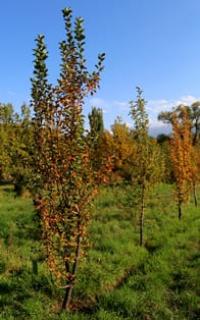
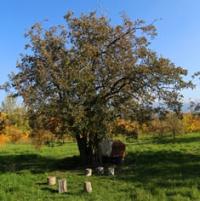
Apple orchards in Almaty.
“Go out into the garden...
How clear the weather is!
How shyly August faded!
The elderberry blossomed the coral,
And the amber hawthorn is withered.
This berry is a gnome apple...
How beautiful the curly crotecus is.
Autumn will soon be shrouded in sleep
A warm garden, watered by rain.”
Severyanin I. “Go out into the garden...”.
Siversii apple blossom festival in Kazakhstan.
The collection fund of wild fruit trees on the territory of the Main Botanical Garden is located at an altitude of 885 meters above sea level, located in the south-eastern part of the garden next to the exotic plant nursery at the Northern entrance: Timiryazeva street, 36 d., Western entrance, Timiryazeva street, 36 d. , building 3, Southern entrance Al-Farabi Avenue 71a in Almaty.
The plot of fruit plants in the Main Botanical Garden of Almaty covers an area of 6 hectares. It was created in 1970 on the initiative and under the leadership of Academician of the National Academy of Sciences of the Republic of Kazakhstan Aimak Dzhangalievich Dzhangaliev, who devoted his entire life to the study and preservation of wild fruit plants of Kazakhstan, revealing the uniqueness and significance of the gene pool of the Sieversii apple tree for Kazakhstan and the whole world.
143 clone varieties (527 specimens) of Sievers apple trees are grown on the site, selected from natural populations of mountain fruit forests. The existing collection is constantly expanding thanks to expeditionary surveys of the mountain systems of Kazakhstan.
Sievers apple tree (Malus sieversii. Ledeb. M.Roem) is a wild fruit species of foothill apple trees from Central Asia and Kazakhstan. The first description of this type of apple tree (1793) belongs to the botanist Johann Sievers, after whom the plant was named.
According to DNA studies, it has been proven that the Sieversii apple tree is the ancestor of most cultivated varieties of apple trees. This tree grows in a limited area (from Tarbagatai to the Western Tien Shan), forming forests and inhabiting slopes and river valleys at an altitude of 1500 to 2000 meters above sea level.
Life expectancy is up to 150 years, and begins to bear fruit at the age of 12 in nature. In cultivation it bears fruit in 4 - 5 years. It blooms in April-May, apples ripen in August-September. Apples are often not inferior in taste to garden varieties.
August-September is a busy time for the employees of the Laboratory for the Protection of the Gene Pool and Introduction of Fruit Plants named after Academician A.D. Dzhangalieva. The work of the laboratory staff does not end at the harvest; ahead of them lies the processing of the collected fruit material, biochemical research, processing of fruit raw materials to produce juices and cider, and agrotechnical work to prepare trees for wintering.
In the period from 2001 to 2022, 35 forms of the Sievers apple tree and 26 forms of the common apricot were selected and brought into the collection area and into the nursery of wild fruit plants of the Main Botanical Garden (Almaty), which are of high value for breeding.
Geographic coordinates of collection fund of wild fruit trees on territory of Botanical Garden: N43°13'05.66" E76°55'05.70"
Note:
If you are using geographic coordinates for Google Earth or Google Maps navigation systems, you must remove the last two digits from geographic coordinates and " (hundredths of a second) and enter the result in the input line. Example: N51°44'09.67" E72°39'40.81" = N51°44'09 E72°39'40
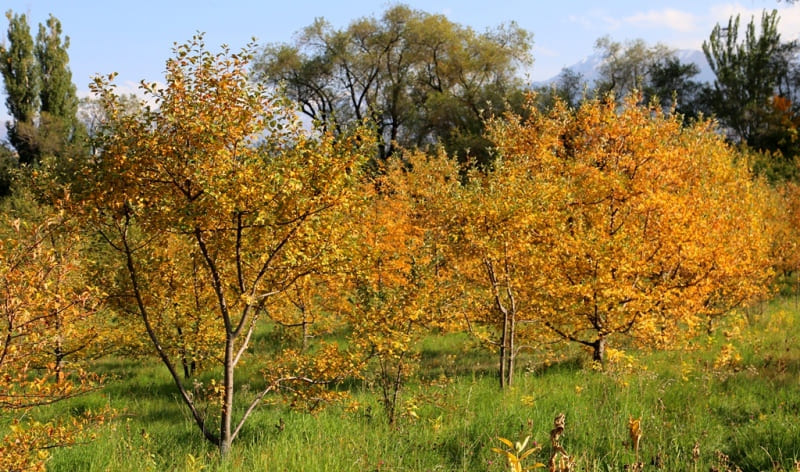
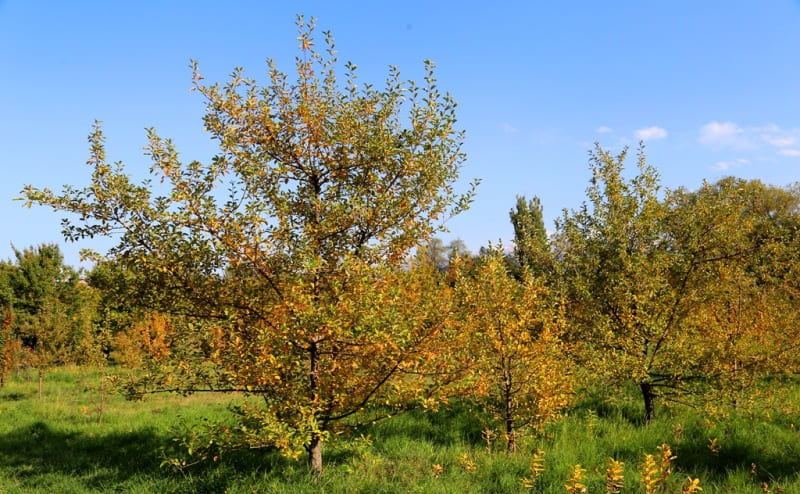
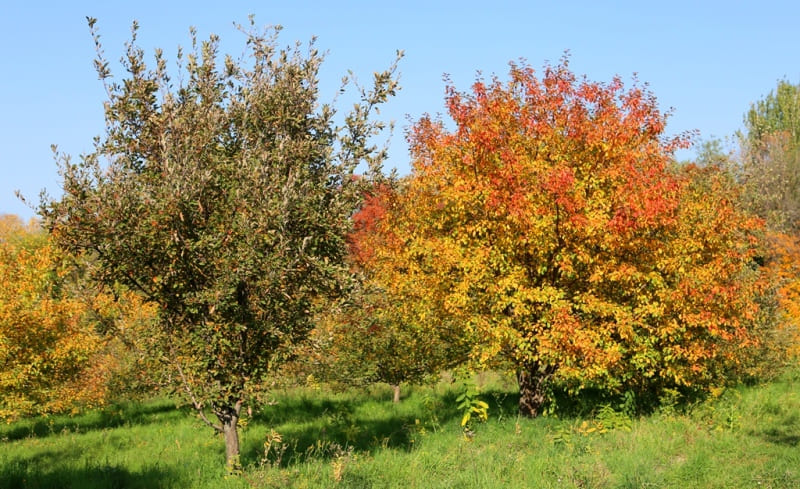
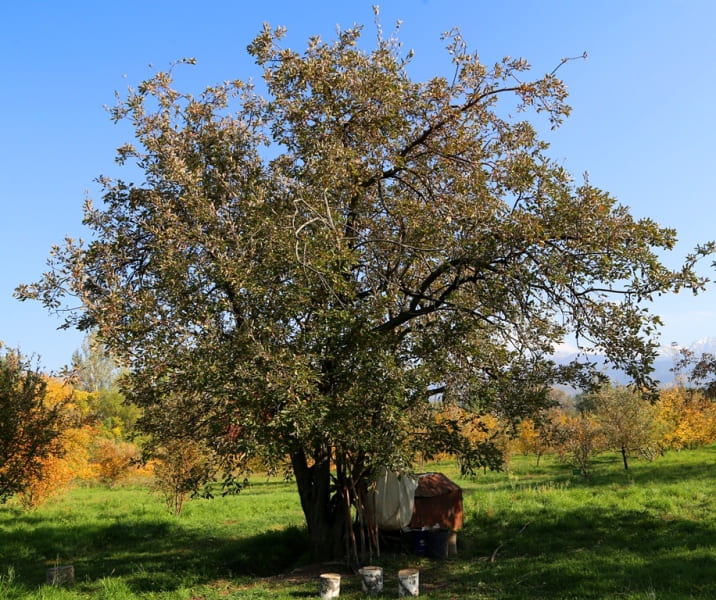
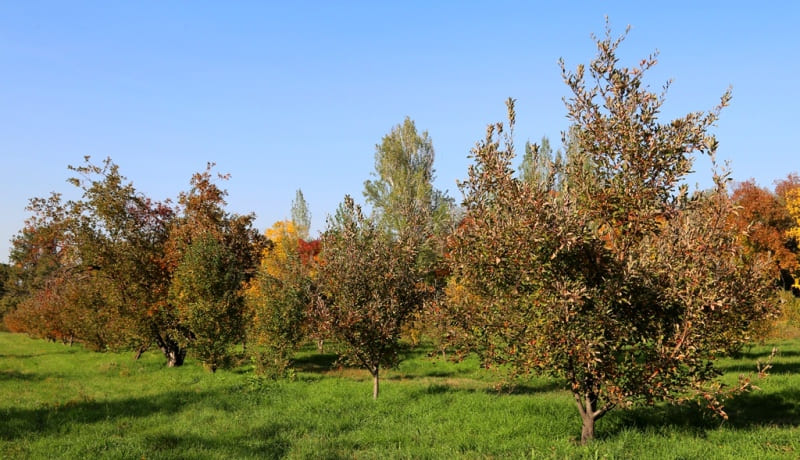
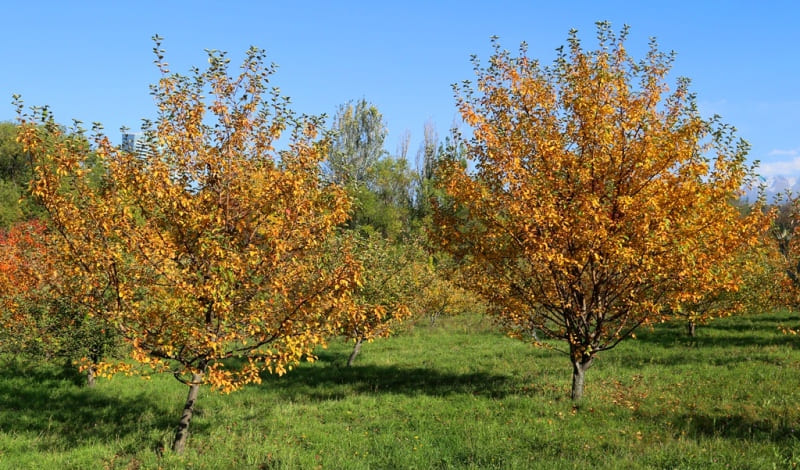
Authority
https://www.botsad.kz/en/news/view/yablonya_siversa
Александр Петров.
Photos by
Alexander Petrov.







